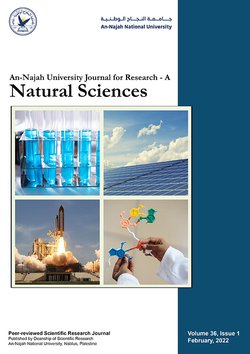RNAi Inhibition of Rabbit Hemorrhagic Disease Virus (RHDV) Gene Expression in CHO Cell Line
Authors:
Article info
2007-09-29
2008-04-08
2008-04-08
145 - 165
Keywords
Abstract
Rabbit hemorrhagic disease virus (RHDV) causes great losses and is life threatening to both wild and domestic rabbits. This work represents the first step toward production of transgenic rabbits resistant to RHDV by RNAi through the inhibition of expression of a part of the RHDV genome and the consequent inhibition of its multiplication. This part of RHDV genome is available under the accession EU003582.1 in NCBI from the nucleotide 372 to 392 (McIntosh et al., 2007). Chinese Hamster Ovary (CHO) cell line was transfected with a plasmid harboring the RHDV target in the DNA segment coding for luciferase (fusion protein) and co-transfected with another plasmid harboring a DNA sequence designed to code for a homologous double stranded RNA sequence of 21 pb. This sequence acts as siRNA to inhibit the expression of the viral genomic part through RNAi. The series of co-transfection resulted in an inhibition level ranging from 82 to 87% of expression of the fusion protein and consequently of the RHDV target. These results are encouraging. However, further investigations are necessary to obtain more inhibition ex-vivo with validation in vivo using transgenic rabbits.
Ghareeb, B. (2008). RNAi Inhibition of Rabbit Hemorrhagic Disease Virus (RHDV) Gene Expression in CHO Cell Line. An-Najah University Journal for Research - A (Natural Sciences), 22(1), 145–165. https://doi.org/10.35552/anujr.a.22.1.535
[1]B. Ghareeb, “RNAi Inhibition of Rabbit Hemorrhagic Disease Virus (RHDV) Gene Expression in CHO Cell Line,” An-Najah University Journal for Research - A (Natural Sciences), vol. 22, no. 1, pp. 145–165, Apr. 2008, doi: 10.35552/anujr.a.22.1.535.
Ghareeb, Bilal. “RNAi Inhibition of Rabbit Hemorrhagic Disease Virus (RHDV) Gene Expression in CHO Cell Line.” An-Najah University Journal for Research - A (Natural Sciences), vol. 22, no. 1, Apr. 2008, pp. 145–65. Crossref, https://doi.org/10.35552/anujr.a.22.1.535.
1.Ghareeb B. RNAi Inhibition of Rabbit Hemorrhagic Disease Virus (RHDV) Gene Expression in CHO Cell Line. An-Najah University Journal for Research - A (Natural Sciences) [Internet]. 2008 Apr;22(1):145–65. Available from: http://dx.doi.org/10.35552/anujr.a.22.1.535
Ghareeb, Bilal. “RNAi Inhibition of Rabbit Hemorrhagic Disease Virus (RHDV) Gene Expression in CHO Cell Line.” An-Najah University Journal for Research - A (Natural Sciences) 22, no. 1 (April 2008): 145–65. https://doi.org/10.35552/anujr.a.22.1.535.
RNAi Inhibition of Rabbit Hemorrhagic Disease Virus (RHDV) Gene Expression in CHO Cell Line
المؤلفون:
معلومات المقال
2007-09-29
2008-04-08
2008-04-08
145 - 165
الكلمات الإفتتاحية
الملخص
Rabbit hemorrhagic disease virus (RHDV) causes great losses and is life threatening to both wild and domestic rabbits. This work represents the first step toward production of transgenic rabbits resistant to RHDV by RNAi through the inhibition of expression of a part of the RHDV genome and the consequent inhibition of its multiplication. This part of RHDV genome is available under the accession EU003582.1 in NCBI from the nucleotide 372 to 392 (McIntosh et al., 2007). Chinese Hamster Ovary (CHO) cell line was transfected with a plasmid harboring the RHDV target in the DNA segment coding for luciferase (fusion protein) and co-transfected with another plasmid harboring a DNA sequence designed to code for a homologous double stranded RNA sequence of 21 pb. This sequence acts as siRNA to inhibit the expression of the viral genomic part through RNAi. The series of co-transfection resulted in an inhibition level ranging from 82 to 87% of expression of the fusion protein and consequently of the RHDV target. These results are encouraging. However, further investigations are necessary to obtain more inhibition ex-vivo with validation in vivo using transgenic rabbits.
Ghareeb, B. (2008). RNAi Inhibition of Rabbit Hemorrhagic Disease Virus (RHDV) Gene Expression in CHO Cell Line. An-Najah University Journal for Research - A (Natural Sciences), 22(1), 145–165. https://doi.org/10.35552/anujr.a.22.1.535
[1]B. Ghareeb, “RNAi Inhibition of Rabbit Hemorrhagic Disease Virus (RHDV) Gene Expression in CHO Cell Line,” An-Najah University Journal for Research - A (Natural Sciences), vol. 22, no. 1, pp. 145–165, Apr. 2008, doi: 10.35552/anujr.a.22.1.535.
Ghareeb, Bilal. “RNAi Inhibition of Rabbit Hemorrhagic Disease Virus (RHDV) Gene Expression in CHO Cell Line.” An-Najah University Journal for Research - A (Natural Sciences), vol. 22, no. 1, Apr. 2008, pp. 145–65. Crossref, https://doi.org/10.35552/anujr.a.22.1.535.
1.Ghareeb B. RNAi Inhibition of Rabbit Hemorrhagic Disease Virus (RHDV) Gene Expression in CHO Cell Line. An-Najah University Journal for Research - A (Natural Sciences) [Internet]. 2008 Apr;22(1):145–65. Available from: http://dx.doi.org/10.35552/anujr.a.22.1.535
Ghareeb, Bilal. “RNAi Inhibition of Rabbit Hemorrhagic Disease Virus (RHDV) Gene Expression in CHO Cell Line.” An-Najah University Journal for Research - A (Natural Sciences) 22, no. 1 (April 2008): 145–65. https://doi.org/10.35552/anujr.a.22.1.535.

Since 2019
Cite Score (Scopus): 0.5
Time to First Decision: 3 Days
Submission to Acceptance: 64 Days
Acceptance to Publication: 10 Days
Acceptance Rate: 28%
Call for Papers:
Sustainable Materials and Chemistry for Energy and Environmental Applications
Why should you
Publish With Us?
An-Najah National University
Nablus, Palestine
Nablus, Palestine
- P.O. Box
- 7, 707
- Fax
- (970)(9)2345982
- Tel.
- (970)(9)2345560
- (970)(9)2345113/5/6/7-Ext. 2628
- [email protected]
- EIC
- Prof. Waleed Sweileh
An-Najah University Journal for Research - A (Natural Sciences) by An-Najah University, Nablus, Palestine is licensed under CC BY-NC 4.0

